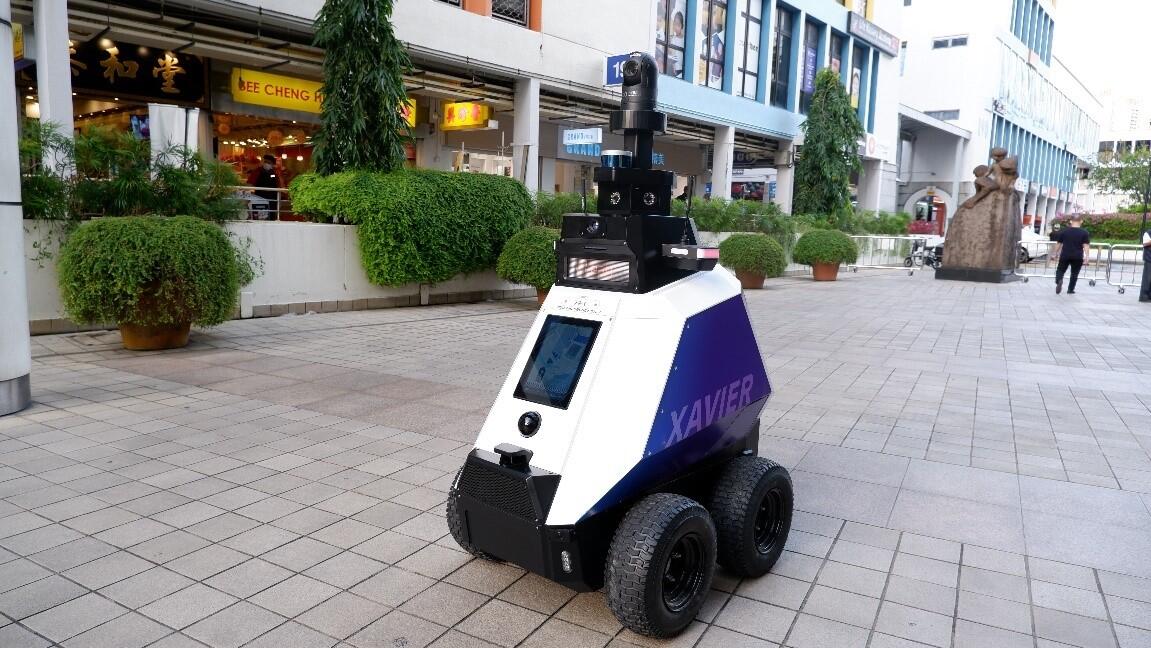
Xavier the ground robot on duty in Toa Payoh Central.
Image: HTXSingapore’s Home Team Science and Technology Agency (HTX) roving robot has hit the streets of Toa Payoh Central as part of a trial to support public officers in enhancing public health and safety.
The robot, named Xavier, was jointly developed by HTX and the Agency for Science, Technology and Research. It is fitted with sensors for autonomous navigation, a 360-degree video feed to the command and control centre, real-time sensing and analysis, and an interactive dashboard where public officers can receive real-time information from and be able to monitor and control multiple robots simultaneously.
“HTX’s ground robots are highly versatile and can be customised for broad and widespread application in different fields and operational environments,” HTX’s Robotics, Automation and Unmanned Systems Centre of Expertise director Cheng Wee Kiang said.
“With Xavier, we are able to force multiply agencies beyond the Home Team by augmenting their workforce needs and achieve greater operational efficiency on a single robotic platform. This synergy enables government agencies to build a strong ops-tech ecosystem and continue enhancing public health and safety.”
Over a three-week trial period, Xavier will detect “undesirable social behaviours” including smoking in prohibited areas, illegal hawking, improperly parked bicycles, congregation of more than five people in line with existing social distancing measures, and motorised active mobility devices and motorcycles on footpaths.
If one of those behaviours are detected, Xavier will trigger real-time alerts to the command and control centre, and display appropriate messages to educate the public and deter such behaviours.
The trial is a joint project between HTX, National Environment Agency, Land Transport Authority (LTA), Singapore Food Agency (SFA), and Housing and Development Board.
“The deployment of ground robots will help to augment our surveillance and enforcement resources,” SFA East Regional Office director Lily Ling said.
“For instance, the surveillance of illegal hawkers can be manpower intensive as officers need to be deployed at various areas across the island. The adoption of robotics technology can be used to enhance such operations, and reduce the need for our officers to do physical patrols.”
Seeing robots being used in Singapore is not uncommon. Last year, Singapore deployed Boston Dynamics’ four-legged droids, dubbed Spot, to its parks, garden, and nature reserves to remind people about social distancing.
A fleet of Lightstrike robots was then rolled out at one of Singapore’s general hospitals in a bid to thoroughly disinfect hospital rooms of pathogens.
More recently in May, the Singapore government launched a one-year trial of using autonomous robots to facilitate on-demand food and grocery deliveries.




















